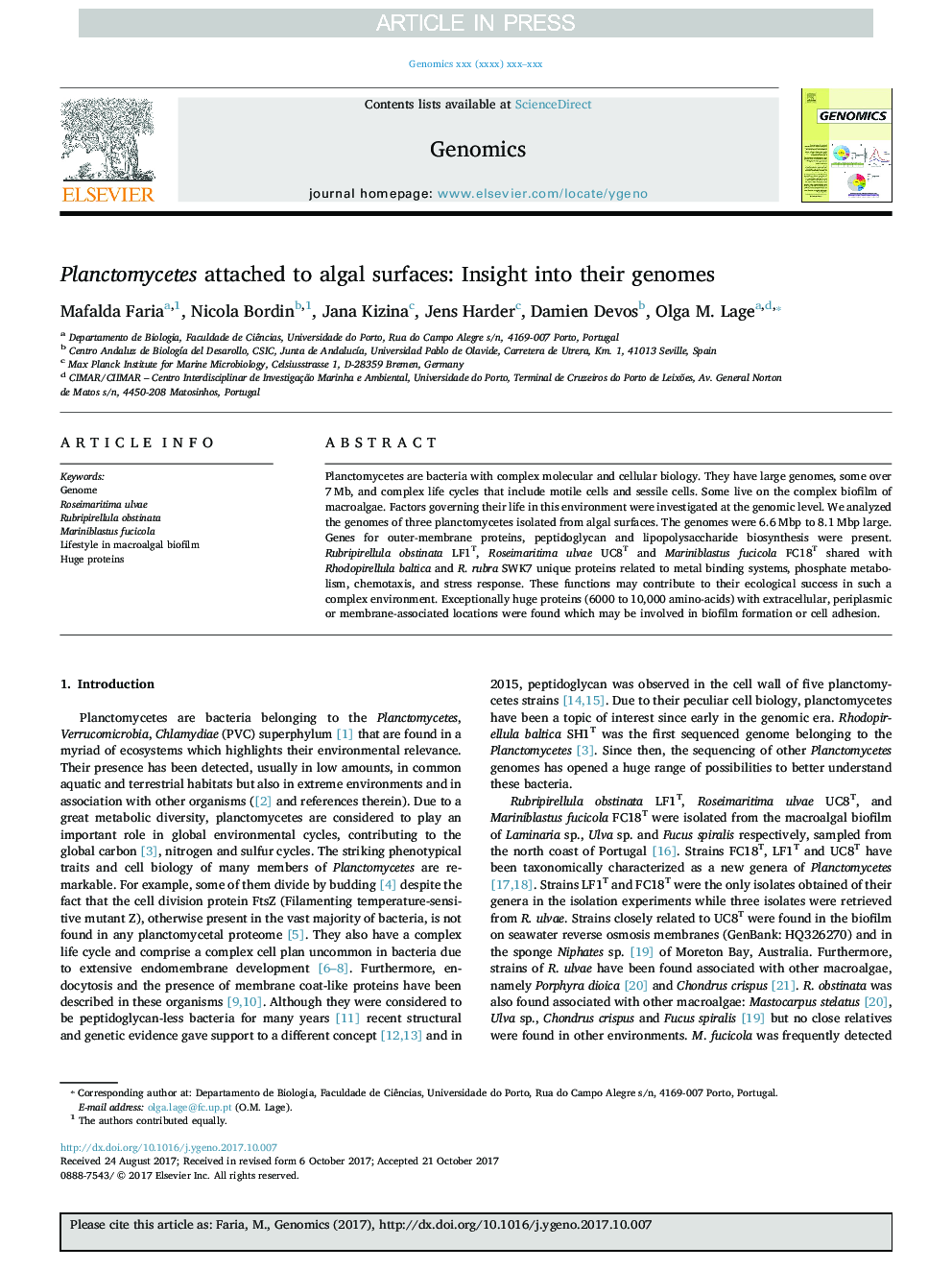| Article ID | Journal | Published Year | Pages | File Type |
|---|---|---|---|---|
| 8646298 | Genomics | 2018 | 8 Pages |
Abstract
Planctomycetes are bacteria with complex molecular and cellular biology. They have large genomes, some over 7Â Mb, and complex life cycles that include motile cells and sessile cells. Some live on the complex biofilm of macroalgae. Factors governing their life in this environment were investigated at the genomic level. We analyzed the genomes of three planctomycetes isolated from algal surfaces. The genomes were 6.6Â Mbp to 8.1Â Mbp large. Genes for outer-membrane proteins, peptidoglycan and lipopolysaccharide biosynthesis were present. Rubripirellula obstinata LF1T, Roseimaritima ulvae UC8T and Mariniblastus fucicola FC18T shared with Rhodopirellula baltica and R. rubra SWK7 unique proteins related to metal binding systems, phosphate metabolism, chemotaxis, and stress response. These functions may contribute to their ecological success in such a complex environment. Exceptionally huge proteins (6000 to 10,000 amino-acids) with extracellular, periplasmic or membrane-associated locations were found which may be involved in biofilm formation or cell adhesion.
Keywords
Related Topics
Life Sciences
Biochemistry, Genetics and Molecular Biology
Genetics
Authors
Mafalda Faria, Nicola Bordin, Jana Kizina, Jens Harder, Damien Devos, Olga M. Lage,
